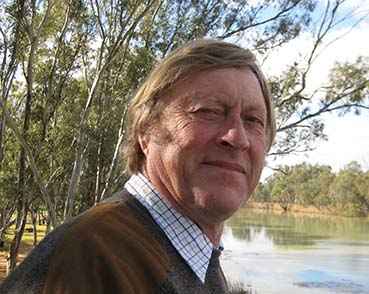Victorian Landcare Magazine - Spring 2016, Issue 67

Bairnsdale farmer Andrew (Stretch) McArthur was the inaugural chair of the East Gippsland Landcare Network when it formed in 1996 and the winner of the 2006 National Landcare Program Individual Landcare Award. He shares his thoughts on Landcare, past and present.
The Bairnsdale Farm Tree Group was the first group in East Gippsland working on revegetation. Then, in 1988, some local residents and landholders formed the Tom’s Creek Landcare Group and I was the inaugural chair. This group operated very successfully with active members involved in many on-ground projects that were usually followed by a family barbecue on the weekend.
By 1996 the number of Landcare groups in East Gippsland had grown to 12 with one facilitator. In order to secure funding, we got the groups together and formed the East Gippsland Landcare Network. By 1997 there were 12 groups and a full-time facilitator.
The network became a powerful platform to lobby for funding to restore, repair and re-establish flora and fauna over a large area. Today there are three networks covering East and Far East Gippsland with 32 groups employing six staff.
Landcare has benefited the region in many ways. Most farmers are out working on their own and Landcare gives them an opportunity to work with neighbours and be part of a community. Landcare has also been a great source of information and inspiration for the people who have moved into the area for a sea change or tree change.
My involvement in Landcare has confirmed my belief that there needs to be a balanced approach to profitable farming that incorporates Landcare principles and economic viability.
Watching Landcare evolve in East Gippsland has brought me great satisfaction. Today it is an organisation that reaches out to all residents of the region – urban, hobby farmers and primary producers. There has been a recognition that Landcare benefits the whole community: from improved water quality to flood mitigation, wildlife and vegetation.
"My involvement in Landcare has confirmed my belief that there needs to be a balanced approach to profitable farming that incorporates Landcare principles and economic viability."
At the moment I am enjoying the rewards of tree plantations and other projects implemented here on the farm over the past 28 years.
I think environmental issues and weed and pest control will be a big part of Landcare in the future. Landcare also encompasses related rural issues such as succession planning, whole farm planning and sustainable agriculture.
Landcare will continue to be a voice for the health and wellbeing of our land and those living and working on it.